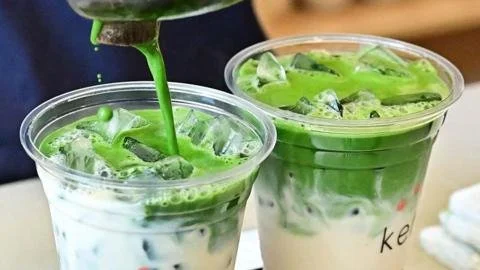Matcha Madness: Is Our Obsession Draining the Green Gold?
Matcha mania has taken the world by storm, transforming from a traditional Japanese tea to a global sensation showcased in trendy drinks and desserts. The surge in matcha’s popularity is largely attributed to social media influencers who are sharing brewing tips and recipes, leading to millions of views under the hashtag #MatchaTok. This growing interest is further fueled by Japan’s post-pandemic tourism boom. Tourists flocking to Japan have boosted the demand for authentic Japanese goods, particularly matcha, pushing prices upward due to surging orders.
Tea importer Lauren Purvis notes that her customers are depleting a month’s worth of matcha within days, with some cafes requiring shipments of one kilogram per day to keep up with demand. Traditionally, matcha is produced through a specialized process involving green tea leaves that are shaded for weeks, lending to its unique flavor profile. However, recent heatwaves and US tariffs have negatively impacted tea crops, leading to limited supplies.
Regions like Kyoto, which normally contributes a significant portion of the tencha used for matcha, have reported poor harvests. Moreover, an aging farming population is further straining matcha production. Many retailers are responding by limiting sales, as shops witness shelves emptied shortly after opening. Prices have jumped by around 30% at some establishments due to ongoing shortages.
Despite the difficulties, there’s a silver lining. The rise in matcha interest has encouraged more mindful consumption. Some advocates are calling for responsible usage, discouraging practices like hoarding or using high-grade matcha in less respectful contexts, such as commercial cooking. To address this, the Global Japanese Tea Association is recommending the use of lower-grade matcha from more plentiful later harvests.
The forecasts around matcha prices suggest that they will likely continue to rise due to impending US tariffs on Japanese goods, further complicating the landscape for distributors. However, there are indications that the wave of demand might stabilize over the next few years, potentially leading to price corrections. As the matcha phenomenon evolves, both enthusiasts and producers will need to navigate the complexities of appreciation versus market movement.

